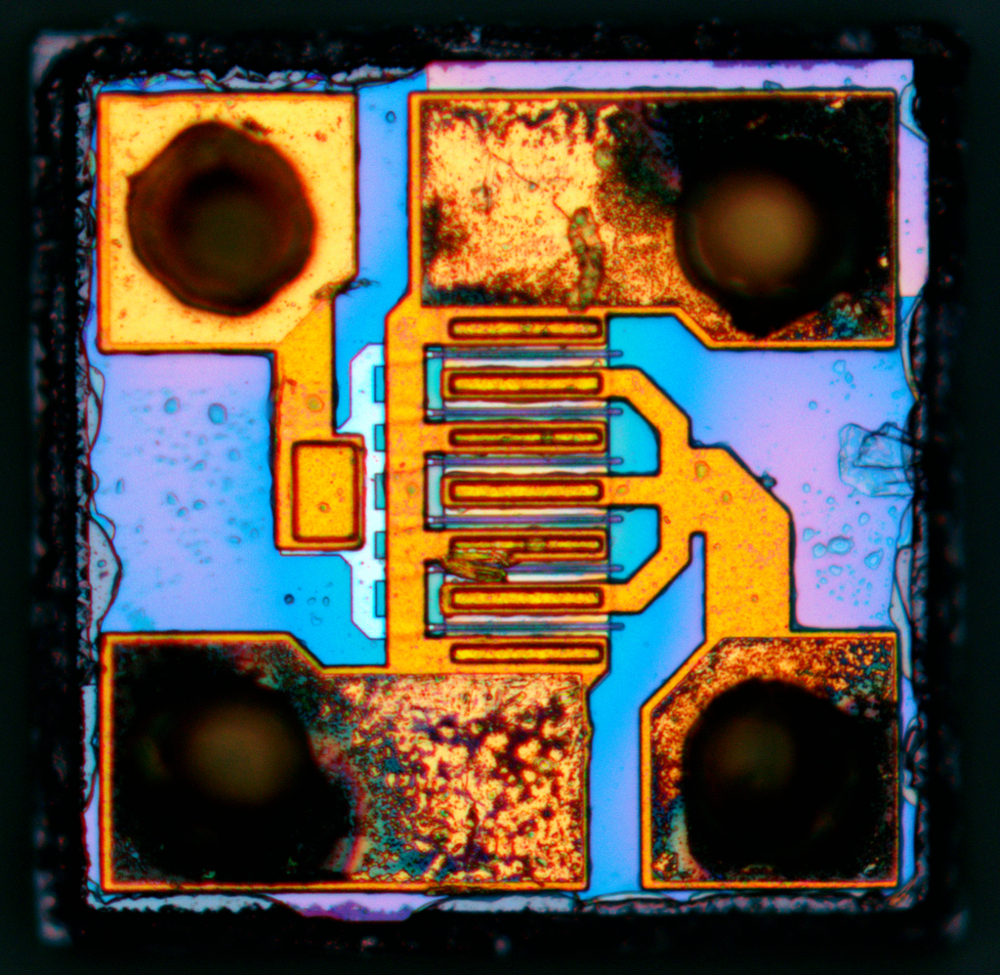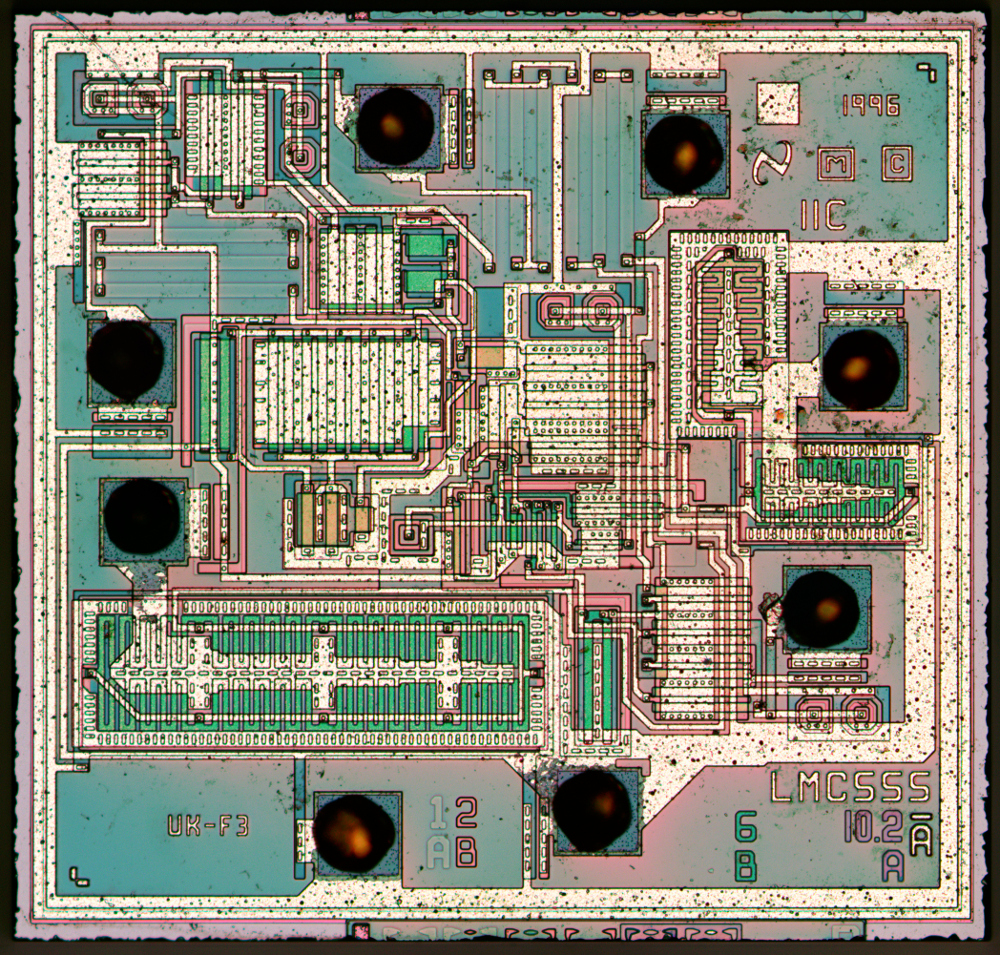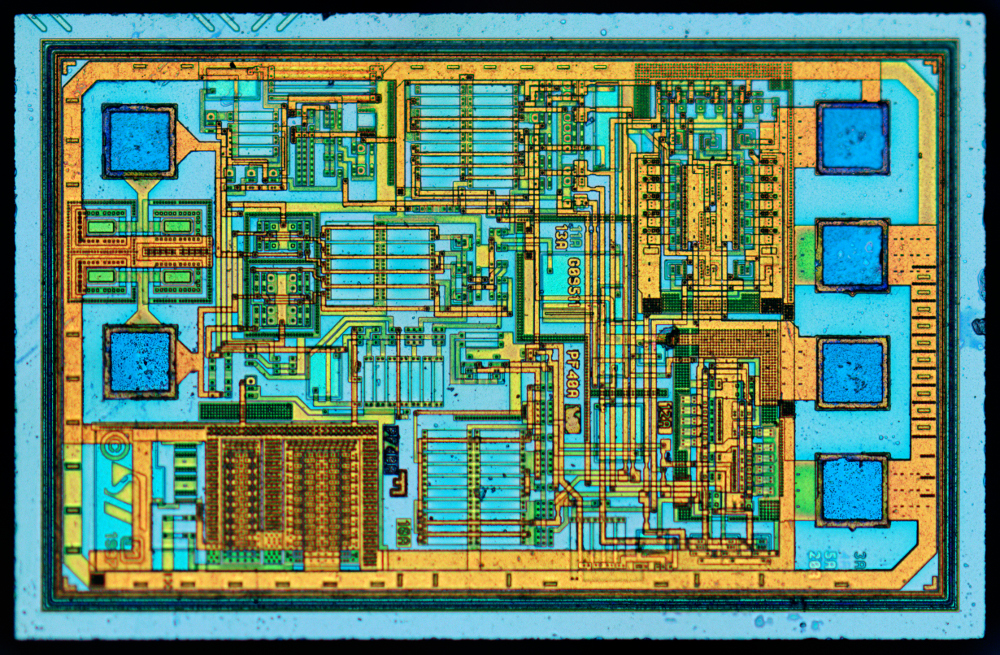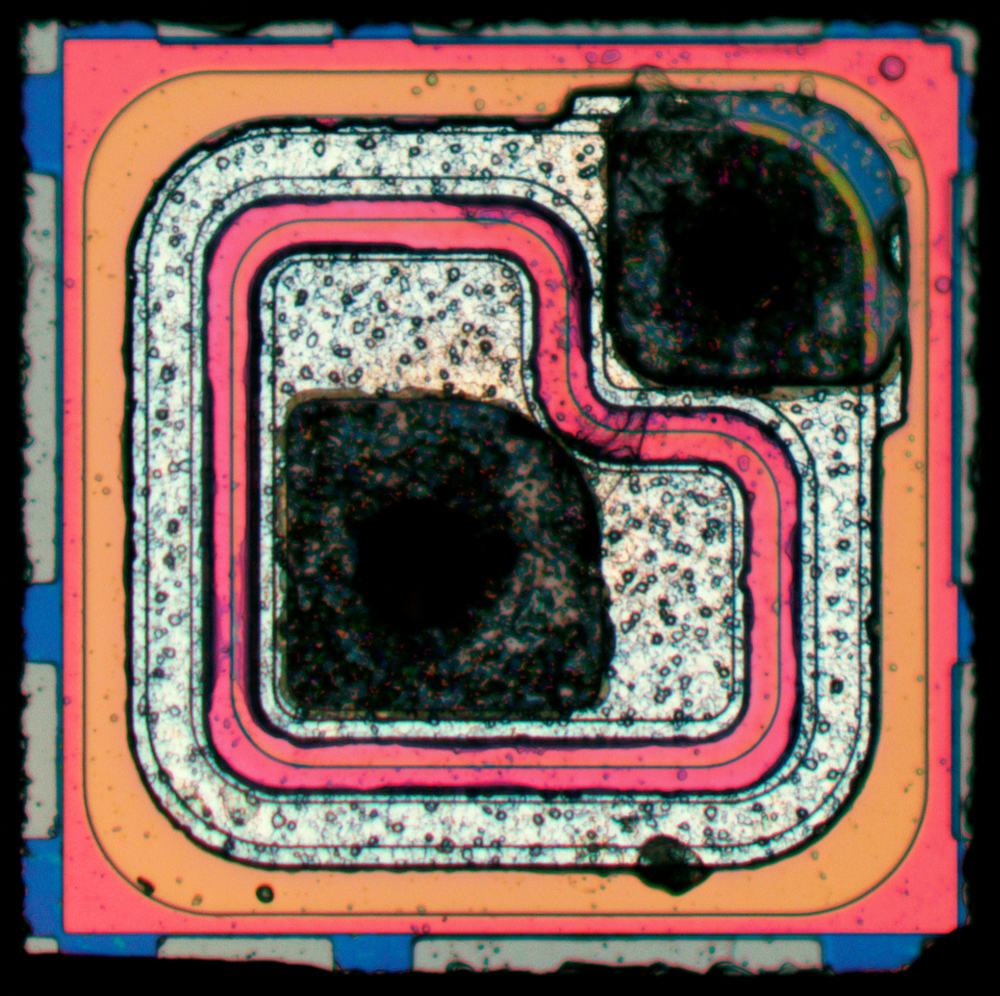April 3, 2016
ST TS971 : weekend die-shot
ST TS321 is a single 12 MHz R2R opamp in SOT23-5 package with low noise and low distortion.Die size 1079x799 µm.
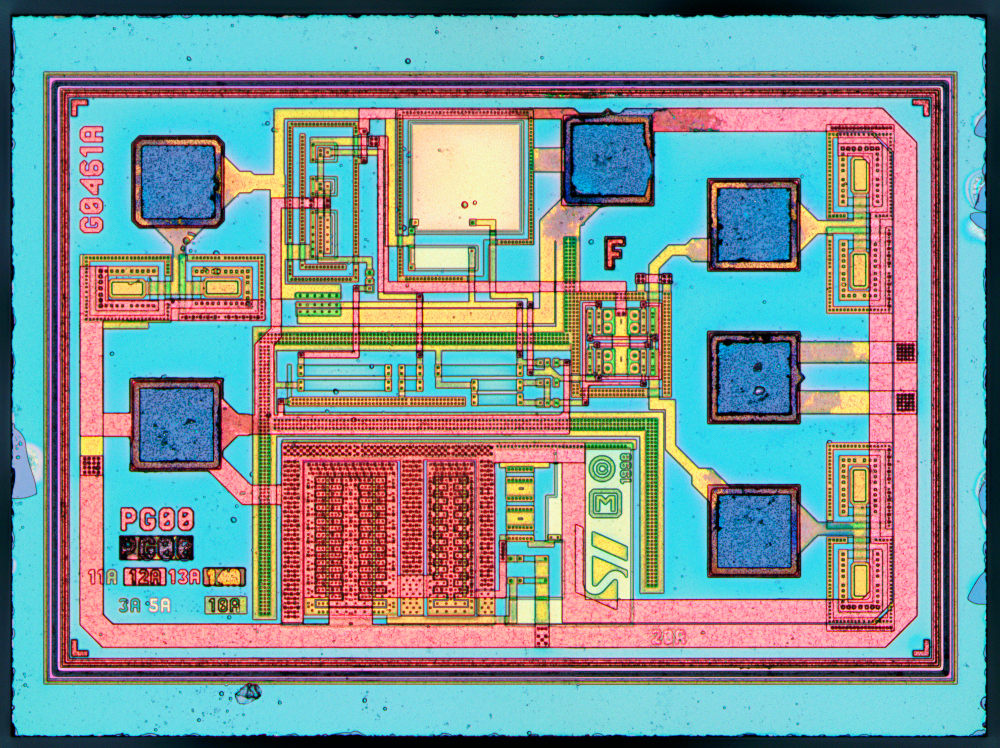
April 1, 2016
March 26, 2016
ST TS321 - generic SOT23 opamp : weekend die-shot
ST TS321 is a single opamp in SOT23-5 package designed to match and exceed industry standard LM358A and LM324 opamps.Die size 1270x735 µm.
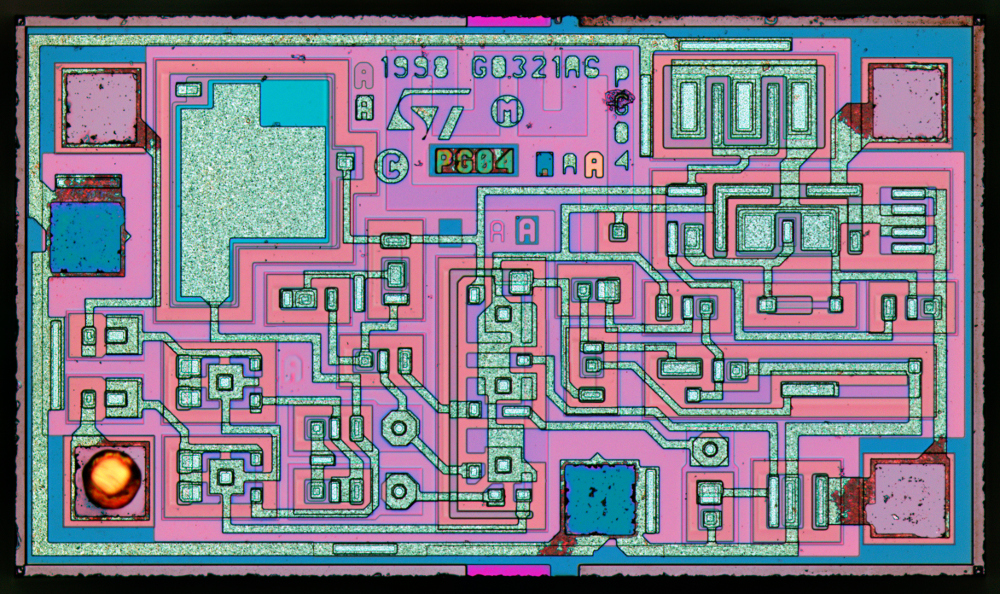
March 22, 2016
March 12, 2016
GD32F103CBT6 - Cortex-M3 with serial flash : weekend die-shot
Giga Devices GD32F103CBT6 really surprised us: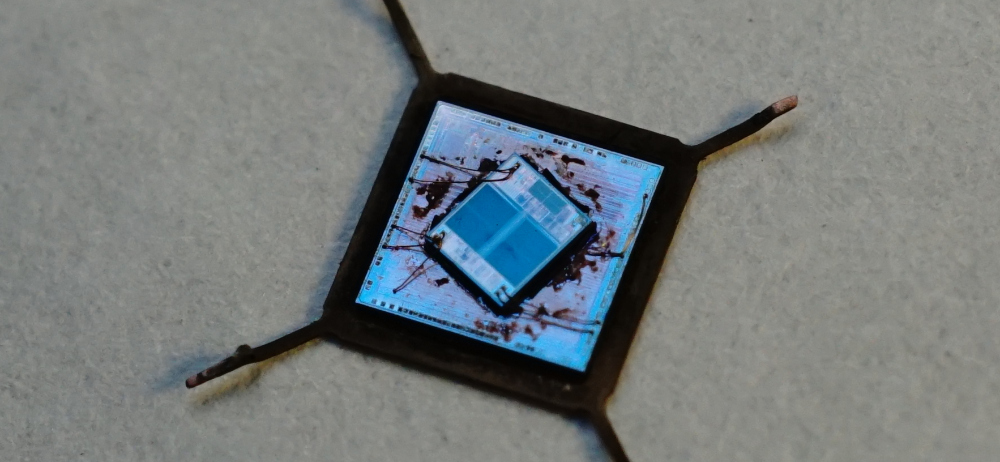
Read more →
February 9, 2016
February 9, 2016





